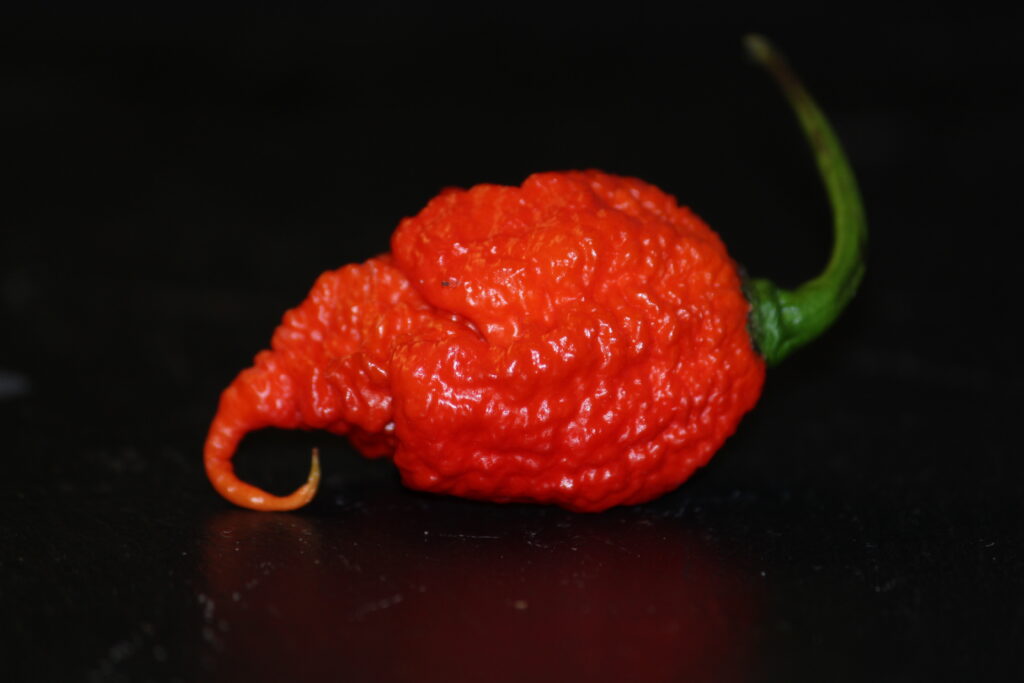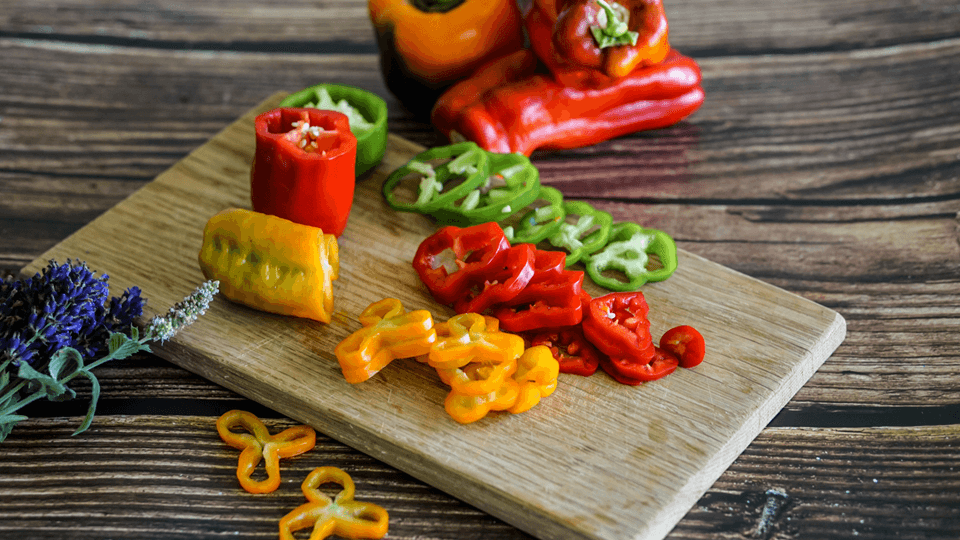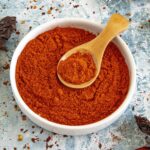Hot sauces have become a global sensation, adding a fiery touch to dishes across the world. The heat in these sauces comes from different types of chillies, each contributing its unique flavor profile and intensity. Whether you’re looking for a subtle kick or an extreme burn, the type of chilli used in the sauce plays a significant role in determining the overall experience. In this blog post, the top 5 chillies commonly used in hot sauces will be discussed, including the infamous Carolina Reaper, known for its intense heat.
1. Habanero Chilli
Habanero chillies are widely recognized and often used in hot sauces due to their distinct fruity and tangy flavor. Ranging from 100,000 to 350,000 Scoville Heat Units (SHU), habaneros offer a strong but balanced heat. They are known for their smoky undertones and citrus-like notes, making them a versatile choice for a variety of sauces.
Habaneros are typically found in tropical and Caribbean-inspired hot sauces. These chillies pair exceptionally well with seafood, grilled meats, and even tropical fruit salsas. Their heat is sharp but manageable for most spice enthusiasts, making them a favorite in both mild and medium-heat sauces.

2. Jalapeño Chilli
Jalapeños are one of the most popular chillies used in hot sauces, particularly because of their milder heat range. With a heat level of 3,500 to 8,000 SHU, jalapeños provide a moderate kick that is suitable for those who enjoy a bit of spice but don’t want to overwhelm their taste buds.
The flavor of jalapeños is fresh and slightly grassy, which makes them a great addition to sauces that require a lighter heat. These chillies are commonly used in sauces for tacos, nachos, and grilled vegetables. They also serve as a base for many commercial hot sauces, offering a balanced spice that appeals to a wide audience. Whether they are used fresh, pickled, or roasted, jalapeños add a mild yet distinctive heat to any hot sauce.

3. Cayenne Pepper
Cayenne peppers are commonly used in both powdered and fresh forms in hot sauces. Known for their consistent heat, cayenne peppers typically measure between 30,000 and 50,000 SHU. This moderate heat level makes cayenne a staple in sauces that need a punch of spice without being overwhelmingly hot.
The flavor of cayenne peppers is sharp, slightly bitter, and pungent. It is often used in classic hot sauces like Tabasco, where the emphasis is on heat rather than complex flavor profiles. Cayenne-based hot sauces are ideal for adding heat to a wide range of dishes, from chicken wings to marinades and dips. Because of its bold, straightforward heat, cayenne is often used in sauces meant for those who enjoy a good kick without an overwhelming burn.

4. Ghost Pepper (Bhut Jolokia)
The Ghost Pepper, or Bhut Jolokia, is one of the hottest chillies in the world, with a Scoville rating that can reach over 1,000,000 SHU. Native to India, this pepper gained international fame for its intense heat and was once recognized by the Guinness World Records as the hottest chilli. Ghost pepper-based hot sauces are designed for extreme heat enthusiasts who seek the highest levels of spice.
While the primary appeal of the Ghost Pepper lies in its searing heat, it also has a unique smoky, earthy flavor that adds depth to sauces. The Ghost Pepper is often blended with other ingredients like fruit, garlic, or vinegar to create a more balanced hot sauce. Ghost pepper sauces are not for the faint of heart and are typically used by those who have developed a high tolerance for spice. These sauces are popular for adding heat to grilled meats, barbecues, and even in hot wings challenges

5. Carolina Reaper
The Carolina Reaper is perhaps the most famous and feared chilli in the world, known for its extreme heat. With a Scoville rating of over 2.2 million SHU, it holds the Guinness World Record as the hottest pepper. Developed by Ed Currie, the Carolina Reaper is a cross between a Pakistani Naga pepper and a Red Habanero. Its reputation for burning is legendary, and it is often used in small amounts to create hot sauces intended for thrill-seekers and chiliheads.
The flavor profile of the Carolina Reaper is a unique blend of fruity and smoky notes, but it is mostly overshadowed by the intense heat it provides. While it is not the most complex chilli in terms of flavor, the extreme heat is what makes it so popular in hot sauces designed for heat lovers. Carolina Reaper-based hot sauces are typically used sparingly, either as a novelty for heat challenges or in sauces meant to be added in small amounts to recipes for an extreme kick.
The intense heat of the Carolina Reaper is often balanced with sweet or tangy ingredients like mango, pineapple, or vinegar to create a more palatable sauce. However, even the slightest amount of this chilli can elevate a sauce to near unbearable levels of heat. For those brave enough to handle it, the Carolina Reaper offers a thrilling, if painful, spice experience.

————————————————————————————————————-
Hot sauces are defined by the chillies they contain, and each variety brings its own level of heat and flavor to the mix. From the milder jalapeño to the extreme burn of the Carolina Reaper, these top 5 chillies—habanero, jalapeño, cayenne, Caribbean Red Habanero, and Carolina Reaper—are among the most commonly used in hot sauces. Whether you’re looking for a gentle heat or a fiery inferno, there’s a sauce out there that caters to every spice preference.
When crafting or selecting a hot sauce, understanding the chillies used is crucial for finding the right balance of flavor and heat. With the right combination of ingredients, any of these chillies can be used to create a sauce that enhances dishes with a bold, spicy kick. Whether for everyday meals or spice challenges, these chillies continue to reign supreme in the world of hot sauce.





